When we were kids, our parents and other grown-ups we knew were always going on trips to the Holy Land. Sometimes, these trips would include visits to Egypt, often called the cradle of civilisation. It’s a country that we learned about in school, the Nile flooding every year (making the area around it the most fertile land), irrigation techniques, hieroglyphics, great pharaohs and mummies. All these things were part of our childhood consciousness. The pharaohs, most famously Ramses II, ‘brother’ of Moses and the pharaoh that wouldn’t let the Israelites go home until the last of the 10 plagues took his firstborn, Egypt’s rich cultural heritage make it a place from which storytellers, filmmakers and artists repeatedly draw inspiration.
Fast forward to life as an adult. When I became an international traveller, Egypt was high on my list of destinations that I planned to visit. This past Christmas, I got to experience this beautifully compelling place first-hand and had an absolute ball.
A region in conflict
I came close to going to Egypt a couple of times. Each time, there was some issue around safety and/or conflict in the general vicinity that prevented travel or where caution was the better part of valour, and the trips got cancelled. This time, however, despite the current conflict in Gaza, a check of the UK foreign office advisories for Egypt confirmed I was able to go based on the fact that concerns around safety, at the time of booking, were concentrated in the northern part of the country and didn’t come close to the areas we were visiting. Our nine-day tour from North to South included cruising the Nile from Aswan to Luxor in the middle. The appeal of Christmas day sailing on the River Nile is priceless.
Excavators on the Nile at Sunrise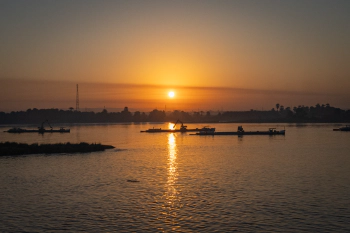
Touring Egypt
I travelled with my sister Rhoda, who lives in the Middle East. We travelled separately and met in Cairo, where our journey would begin a day before our tour. We both wanted the extra day to chill, unwind, and catch up before the hectic touring days began. In hindsight, this was a good decision as the tour was a series of early starts and long days with so much stimulation it was hard to stay awake when our heads hit the pillow at night.
The tour had been recommended to Rhoda by a colleague who raved about it, and the company, Expat Explore1, has an excellent reputation for the organisation and the content of their tours. Our nine-day excursion would start in Cairo, travel by plane to Aswan, where our three-day Cruise started, travel further south almost to the Sudan border to Abu Simbel and end in Luxor, then continue north by road to Hurghada and finally finishing back where we started in Cairo. Essentially, we travelled the length of the country in a series of air-conditioned coaches, planes and riverboats.
Street vendor selling papyrus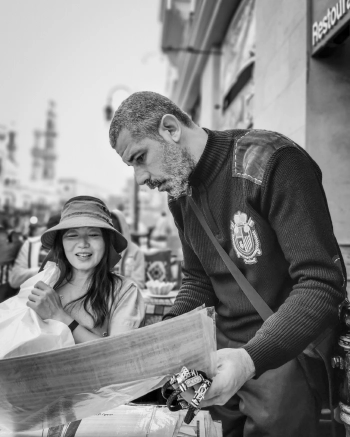
Our guide, Medhat, is an Egyptologist and a lovely man who took care of the knowledge sharing, not only of the sights but of the culture, politics and most importantly, how to stay safe and sane on the tour, which saw us running the gauntlet of street vendors (more about that later) at each of the historical sights and tourist destinations that we would visit.
Although, like most places, you can plan and execute a trip to Egypt by yourself, organising transport, passes, tickets and the like, I can’t emphasise how much time and effort joining an organised tour can save you, especially if it is the first visit to a country. In addition, we met people from many different countries, including South Africa, Australia, India and Taiwan, and you became a ‘family’. Our tour had a mixture of families, couples and individuals of all ages, and the exchange between us of each other’s cultures and stories added an extra dimension to the trip.
Photographing Egypt
As a travel writer and photographer, capturing the essence of the places I visit is crucial to writing compelling articles about them. There is so much to see and learn about the places we visited. Each day was jam-packed, visiting two to three sites each day, with only one day of complete downtime. There were very early starts, late finishes and lots of catching zzz’s on coaches. This meant that the time you spent at each site was limited, so photographing the sites was an exercise in choosing the best things to capture and move on.
A lesson I learned on day one at the Great Pyramids at Giza. We had about an hour of free time to wander around, and I wanted to get a particular shot and spent about 20 minutes trying to get it. What I didn’t factor in, though, is how fast the time goes when you’ve got so many visually arresting sights to compose. Add to that the milling crowd of thousands of other tourists walking in and out of shot, and that perfect timing of when you get your shot set up only for some 15-year-old Instagrammer type walking up and blocking your ideal composition.
Abu Simbel Temple of Ramses II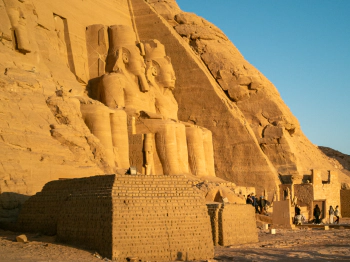
I had to learn fast and was able to work out a rhythm so that I could hear our tour guide explain the significance and history of the site we were visiting, taking in the surroundings with my eyes and letting my imagination complete the stories in my mind, before spending a quiet few minutes when he released us to work out what I wanted most to take home of the essence of the place as an image, then spending about half the remaining time taking pictures and the other half just experiencing the site.
This worked well for me, as I know 100% that I will be back to photograph Egypt again under my own steam. The ability to spend time in quiet parts of the day before the crowd is limited in a touring situation, and although we had some really early starts, it’s a big country and travelling to the destinations plays a significant part in the ability to reach a spot before the light gets too harsh, or there are just too many people.
Exceptions for me were the Temple of Philae, which was beautifully quiet, and Abu Simbel, which we reached just as the sun rose, which is the best time of day as the light was just spectacular.
Having a Talk in front of the Great Pyramid at Giza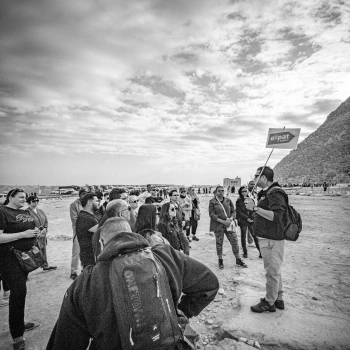
Trip Highlights
Of course, a trip to Egypt to see the ancient relics and monuments has to include specific marque destinations. These are my favourite highlights from a journey full of highlights. We even started grading the experiences to decipher the best site. However, this proved useless, as many received the same grade.
Pyramids of Giza / Pyramid Plateaux
First and foremost is the last remaining wonder of the ancient world, the Pyramids at Giza. We’d seen them the day before on our way to the hotel to meet our tour group, travelling the freeway out of Cairo. They were shrouded at that point, and when you get up close and personal, the awe-inspiring pyramids take your breath away. I wish we had had more time, but it was the nature of touring; you only have a little time to fit in all the sites you want to visit. I could have spent at least half a day at each one. Still, we only had an hour to wander the sites of our own volition before getting on the bus and moving to the next destination.
Temple of Ramses II and Nefertiti, Abu Simbel
Next for me was the Temples of Abu Simbel. I learned about this site when watching Death on the Nile a few years ago. The story of how these temples were moved from their original location to their current location due to the building of the Aswan High Dam is remarkable. The site is impressive, and I could have spent a whole day here walking around and viewing the art of the temples. With camera in hand, I couldn’t stop walking from chamber to chamber. Again, I was stimulated by all the quality of the carvings, the meanings behind them, the plates on the walls, understanding the stories of what the hieroglyphs are depicting, trying to translate the pictures, and the light, the light - just A-m-a-zing.
The Heretic Pharaoh Akhenaten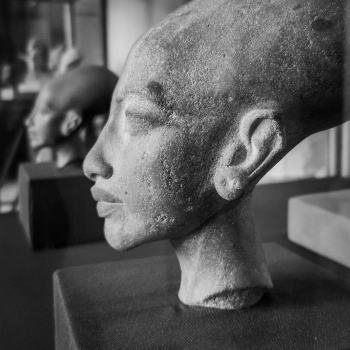
Temple of Amun-Ra, Karnak
Being the creator god, everything built in honour of Amun-Ra has to be bigger, better and more than anything made for anyone else.
So it was written, so shall it be. Karnak is huge, impressive, and jaw-droppingly stunning. The Great Hypostyle Hall has over 100 columns in it. Ostensibly, they once supported a roof that no longer exists. Each of the columns has inscriptions and hieroglyphs that were added to by successive pharaohs over a period spanning several reigns. The sheer scale of it in a complex that is itself massive still takes you aback.
Temple of Isis, Philae
Kitten listens intently to the tour guides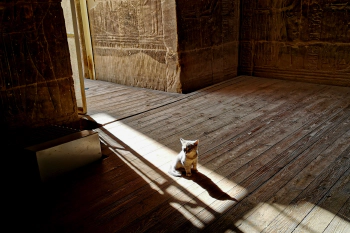
The goddess is associated with female power and strength, and this temple was one that I was looking forward to experiencing first-hand. The temple is on an island in the middle of the Nile River, so it was a serene boat ride from Aswan to Agilkia Island.
Egyptian Hieroglyphs at Philae Temple
I enjoyed the serenity of this place and the fact that it was one of the spots that didn’t seem so rushed. Due to the extra time, I could sit and talk with some temple custodians. Youssef told me a bit about his life, his family and what it’s like to work as a civil servant in Egypt nowadays. Even a ten-minute conversation with someone who lives and works in a country you’re visiting is enough to give you a different perspective. Youssef and his friends Jameel, Ali, and Mohammad are all Nubians who live in Philae. Safe to say life is tough.
Tutankhamun canopic jars - Egyptian Museum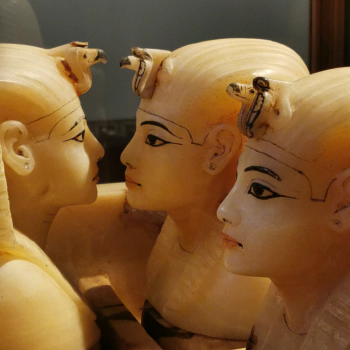
Nile Cruise
This part of the trip was a highlight, not just for the nostalgia of travelling along the majestic river Nile or the curiosity of how you get to your ship by walking through other vessels as they are docked side by side, but definitely because the MS/Medea has the most welcoming and friendly crew and had THE best food for the whole of the trip. Food is an essential part of experiencing the country or region’s culture. Our boat gave us an incredible variety of breakfast, lunch, and dinner options, top marks. bx19at They also made the best Hibiscus tea (sorrel to us Jamaicans) of any of the places we visited.
Valley of the Kings
I felt like Indiana Jones at this point. Venturing into dead pharaohs’ tombs is an experience I will never forget. I can’t really explain what it feels like to go into these sacred spaces and see the level of care that went into their creation, let alone the work that’s been done to excavate them and make them so it’s comfortable and safe for people like us to venture in and peer, take selfies and record ‘welcome to my channel’ videos.
Step Pyramid and Temple of Djoser, Sakkara
Lady at Step Pyramid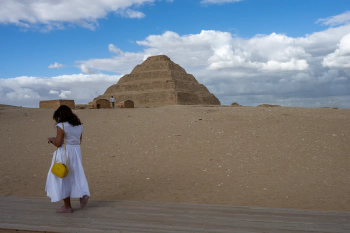
The first of its kind in Egypt, the Step Pyramid at Djoser was one that I enjoyed visiting, but surprisingly, primarily because of the temple that sits at the entrance to the complex rather than the pyramid itself. The temple’s design is beautiful, and the thought that went into it still draws groans of approval when you realise that the walls were not straight and smooth like some others but buttressed to prevent erosion by the desert winds. This pyramid differs from the Giza Pyramids in that the burial chambers are not within the pyramid itself but underground, as was the custom at that time.
Tutankhamun Exhibit/Egyptian Museum, Cairo
Perhaps the most famous of all pharaohs is Tutankhamun, the boy king who ruled Egypt for just ten years, before he died at age 19, but whose tomb was found almost intact with all the treasures of a pharaoh still contained within it. When visiting the museum, a special exhibit displays some of the haul. The museum is well worth a visit for this alone. The rest of it, while interesting, is suffering a bit of neglect in favour of the much-anticipated opening of the new museum, with much of the relics packed away in readiness to transport to the new site in Giza.
Parting thoughts
Leaving Egypt to head home, I’m sitting in one of the airport lounges, reflecting on the past nine days and what they have meant to me. Egypt has long been close to the top of my travel list, not just for my interest in the history and the artefacts that have occupied my heart and mind since childhood, but also for wanting to understand the cradle of civilisation a bit more, and seeing the places for myself, whilst listening to an Egyptian talk with passion about the places that we have visited is priceless.
Seeing Cairo, the sprawling metropolis of 30 million people. Understanding the history of Tahir Square, the site of the beginning of the Arab Spring in 2011, and the troubles that have plagued this region, understanding the role that tourists play in helping the local economy, if not stimulating it, especially now when problems in the region are keeping tourists at bay has been enlightening.
I came so that my sister and I could spend quality time together seeing and talking and photographing the Pyramids and the temples and the tombs of famous kings and queens, so we could understand the Gods, the roles they played in ancient times and how they were revered and worshipped. We came to cruise the infamous Nile River to see the dams and locks of Aswan. We came to experience the beauty of Hurghada, that crystal clear water, scuba and snorkel.
I think we also came to pay homage to the places our parents and other Caribbean elders trod before us. This year, we were also in Jordan, another area of antiquity where the river plays an equally important role in our collective history. Our parents dipped their toes in the Jordan River and Mudded at the Dead Sea. They, too, saw the Great Pyramids of Giza, the Sphinx, and the Valley of the Kings. It is in memory of them both that we’ve retreaded this path.


